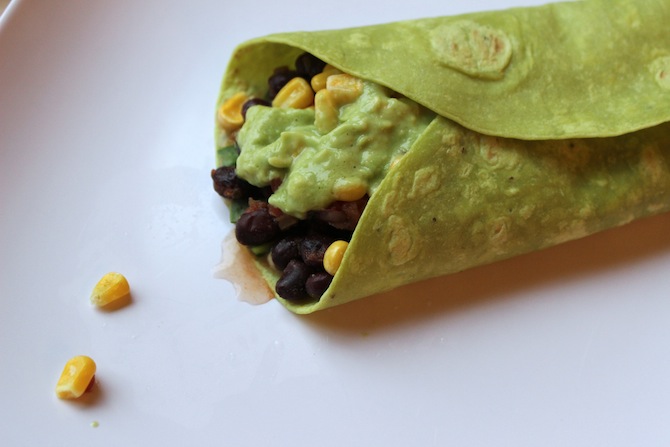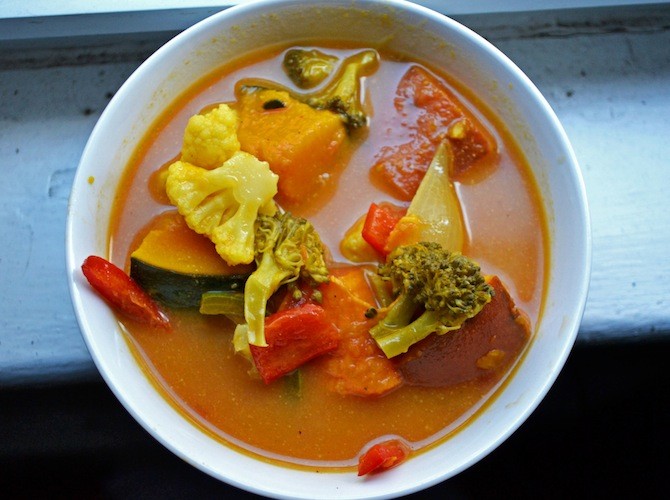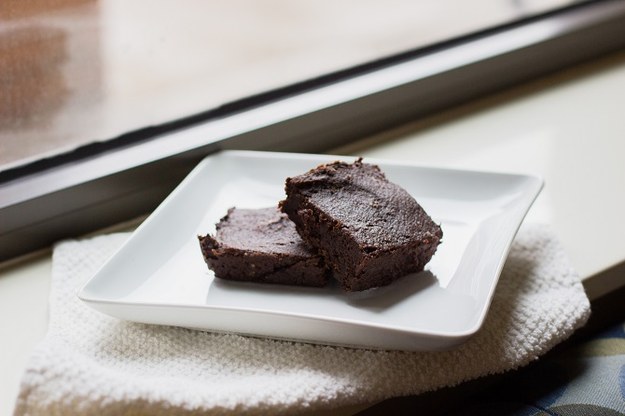Vegetarianism in the US has grown a lot in recent years as more and more people come to realize just how many nutritional, environmental, and ethical benefits it offers. However, a lot of people are still unsure about what vegetarians and vegans eat, and how much variety these diets can offer.
As a vegan and a dietetics student, I have learned a lot about how to find balance and variety in a diet without meat or fish.
The main components of a balanced meal are grains/starches, protein, fruits/vegetables, a healthy fat, and a calcium source. Grains and protein should each constitute a quarter of a meal, with vegetables and fruit occupying half of the plate, and a serving of oil or nuts added in as you like. A cup of dairy or soy milk on the side is a great way to get both calcium and extra protein.
So what does this actually look like throughout the day?
Breakfast

Photo by Becky Hughes
Everyone knows breakfast is the most important meal of the day, and luckily, many breakfast foods are already vegetarian. Pancakes with fruit and peanut butter, or a bowl of cereal with milk, a hard-boiled egg, and a piece of fruit on the side are two great options for vegetarians.
At first glance, vegans may appear to have fewer choices, but most breakfast foods can easily be whipped up with non-dairy milk and egg substitute. A good old-fashioned bowl of oatmeal or granola with nuts, fruit, and whatever treats your imagination comes up with is always great, too.
Lunch

Photo by Santina Renzi
Lunch can look like a variety of things, depending on whether you have time to sit down and eat a large salad or if you have to quickly eat a sandwich in between classes, but there are plenty of well-balanced options for vegetarians and vegans alike.
If you’re like me and you don’t have too much time for lunch, a sandwich with a piece of fruit and glass of milk can be a great option. An easy wrap can be made with lettuce or spinach, some beans, avocado, and salsa, and this provides your starch, protein, and vegetables. A PB&J with carrot sticks can also be great.
If you have time to have a salad, make sure to pack one that has more than just the typical lettuce, cucumber, and tomatoes. Check out some recipe ideas that include grains like rice and quinoa, as well legumes like lentils and black beans.
Dinner

Photo by Rae Steinbach
This is one of the easiest meals to make, since there are so many different options. If you don’t want to follow a recipe, or if you are looking for an easy way to use leftover ingredients in your fridge, an easy meal consists of a grain with some wilted greens and chopped vegetables, a protein like edamame, tofu, or even peanut butter, and then a glass of milk on the side. Macro bowl recipes fall along these lines and can provide delicious ideas if you need a place to start.
Hearty soups can also be very welcome during cold winter nights. A vegetable broth base goes well with potatoes, tofu, beans, barley, and obviously any vegetable you can think of.
Dessert

Photo by Abby Wang
Even nutrition students like myself believe in the importance of dessert as part of a balanced diet. Vegetarians have it really easy in this area since most desserts, with the exception of animal-based gelatin products or bacon, are vegetarian-friendly.
However, vegans have plenty of options, too. Non-dairy ice creams are delicious if you are willing to spend a little more money, and there are plenty of websites with recipes for vegan baked goods.
A simple dessert I like is coconut cream with fruits like strawberries or pineapple. If you buy a can of coconut milk and put the top layer of the milk in a container and refrigerate it, it will thicken to the consistency of Cool Whip and you can let your imagination run wild with delicious ideas.


